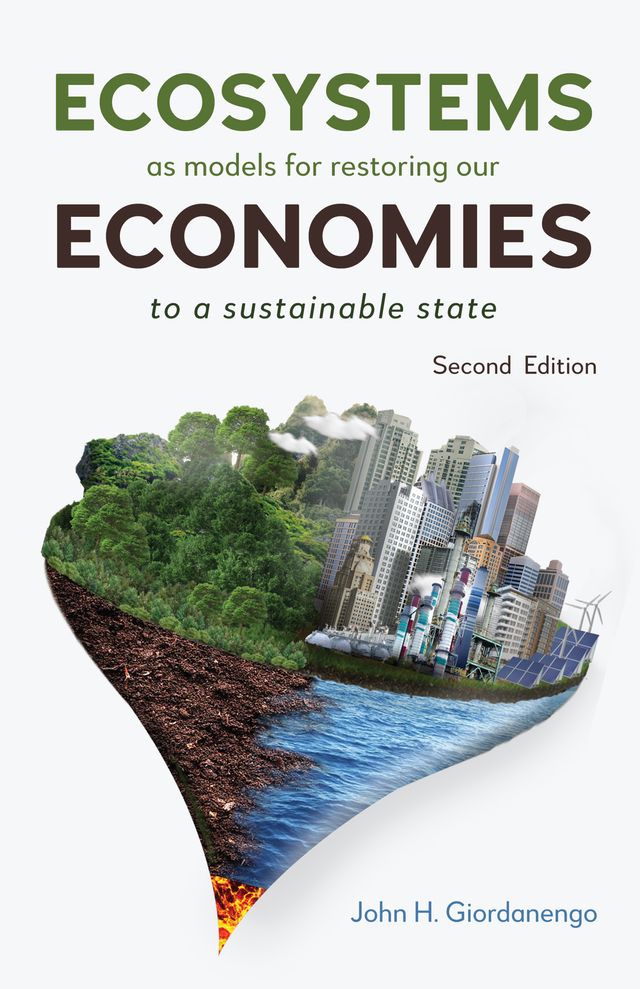John H. Giordanengo
Paperback
£20.99 / $24.95
Hardback
£80.00 / $110.00
eBook (WEB PDF)
£25.00 / $35.00
eBook (EPUB)
£25.00 / $35.00
ISBN: 9781839993190
Pages: 358
Pub Date: April 2025
Imprint: Anthem Press
John H. Giordanengo
Paperback
£20.99 / $24.95
Hardback
£80.00 / $110.00
eBook (WEB PDF)
£25.00 / $35.00
eBook (EPUB)
£25.00 / $35.00
ISBN: 9781839993190
Pages: 358
Pub Date: April 2025
Imprint: Anthem Press
Appeals to a broad range of people across ages, values and political beliefs, and will change the way we live our lives
Integrating the fields of ecology and economics with practical business and conservation experience, this book delivers a clear path to restoring our economies to a sustainable state. The result is not a decline in our freedoms, values, and quality of life, but a means to sustaining them in a turbulent 21st century.
Students, business owners, and consumers have read this book and attended John’s seminars only to remark, “Why haven’t we learned this in our traditional coursework?” or “This book brings so much clarity to the fields of sustainability and environmental sciences.”
Intuitively, many of us sense some universal relationships exist between Earth’s ecological and economic systems. For Giordanengo, the most insightful relationships were not the ones he first imagined as a business and ecology student in the early 1990s. This book not only unveils critical new insights into ecology and economics, but integrates them with global case studies to make a bold case for redesigning our economies according to the immutable rules of nature. For example, viewing theories such as ecological succession through an economic lens, we discover the root causes of the wealth gap, while gaining clarity on the role of economic diversity in productivity growth and innovation gains.
Timely, Giordanengo melds centuries of research with decades of business and ecological experience to reveal three simple components common to ecosystems and economies: diversity, energy, and trade. The proper management of these foundational components is perhaps the greatest obstacle to resolving tensions between society, nature, and the global market economy. The scale at which diversity, energy, and trade must be managed is not global, nor is it hyper local. The scale of a sustainable economy lies somewhere between these two extremes, the subject of part II.
Part III of this book outlines a path for restoring our economies, guided by humanity’s shared experiences in ecological restoration. The essential process of ecosystem recovery (i.e., succession) is one such pathway. Unwittingly, the United States and other developed nations manage economic succession in ways that lower their productivity growth and resistance to future disturbances, while concentrating wealth into fewer hands. With such knowledge in hand, however, nations can also move the succession dial toward the productive and diverse center, where wealth and resources are recirculated quickly, new business opportunities are created, wealth is naturally distributed, and resilience and resistance are fortified—a stout shield in the face of global economic turmoil.
From regenerative agriculture to regional-scale manufacturing, and from endogenous energy systems to ecological conservation, practical business strategies and government policies are woven throughout this seminal book.
Consumers will find sound evidence to support a sustainable future.
Students will discover not just theoretical and systems knowledge, but applied economics, ecology, and conservation centered around actionable pathways.
Business and industry leaders will find novel solutions that balance financial responsibilities with social and environmental well-being.
One of nature’s most primeval rules is that times of great turbulence favor the evolved model, not the model of the past.
